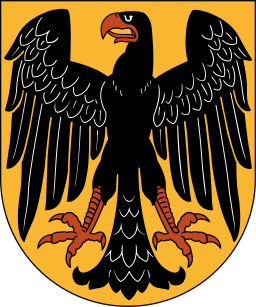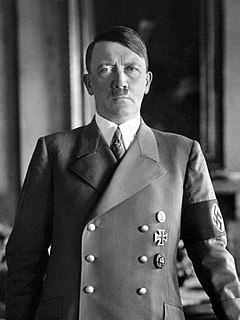
The Weimar Republic is an unofficial historical designation for the German state from 1918 to 1933. The name derives from the city of Weimar, where its constitutional assembly first took place. The official name of the republic remained Deutsches Reich unchanged from 1871, because of the German tradition of substates. Although commonly translated as "German Empire", the word Reich here better translates as "realm", in that the term does not have monarchical connotations in itself. The Reich was changed from a constitutional monarchy into a republic. In English, the country was usually known simply as Germany.

The Reichstag Fire Decree is the common name of the Decree of the Reich President for the Protection of People and State issued by German President Paul von Hindenburg on the advice of Chancellor Adolf Hitler on 28 February 1933 in immediate response to the Reichstag fire. The decree nullified many of the key civil liberties of German citizens. With Nazis in powerful positions in the German government, the decree was used as the legal basis for the imprisonment of anyone considered to be opponents of the Nazis, and to suppress publications not considered "friendly" to the Nazi cause. The decree is considered by historians as one of the key steps in the establishment of a one-party Nazi state in Germany.

The Enabling Act of 1933, formally titled Gesetz zur Behebung der Not von Volk und Reich, was an amendment to the Weimar Constitution that gave the German Cabinet — in effect, Chancellor Adolf Hitler — the power to enact laws without the involvement of the Reichstag. The Enabling Act gave Hitler plenary powers and followed on the heels of the Reichstag Fire Decree, which had abolished most civil liberties and transferred state powers to the Reich government. The combined effect of the two laws was to transform Hitler's government into a legal dictatorship.

The German Centre Party is a lay Catholic political party in Germany, primarily influential during the Kaiserreich and the Weimar Republic. In English it is often called the Catholic Centre Party. Formed in 1870, it successfully battled the Kulturkampf which Chancellor Otto von Bismarck launched in Prussia to reduce the power of the Catholic Church. It soon won a quarter of the seats in the Reichstag, and its middle position on most issues allowed it to play a decisive role in the formation of majorities.
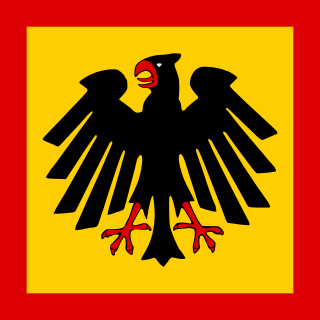
The Reichspräsident was the German head of state under the Weimar constitution, which was officially in force from 1919 to 1945. In English he was usually simply referred to as the President of Germany. The German title Reichspräsident literally means President of the Reich, the term Reich referring to the federal nation state established in 1871.
The Weimar Coalition is the name given to the centre-left to center-right coalition of the Social Democratic Party of Germany (SPD), the social liberal German Democratic Party (DDP) and the Christian democratic Centre Party, who together had a large majority of the delegates to the Constituent Assembly that met at Weimar in 1919, and were the principal groups that designed the constitution of Germany's Weimar Republic. These three parties were seen as the most committed to Germany's new democratic system, and together governed Germany until the elections of 1920, when the first elections under the new constitution were held, and both the SPD and especially the DDP lost a considerable share of their votes. Although the Coalition was revived in the ministry of Joseph Wirth from 1921 to 1922, the pro-democratic elements never truly had a majority in the Reichstag from this point on, and the situation gradually grew worse for them with the continued weakening of the DDP. This meant that any pro-republican group that hoped to attain a majority would need to form a "Grand Coalition" with the conservative liberal German People's Party (DVP).
Article 48 of the constitution of the Weimar Republic of Germany (1919–1933) allowed the President, under certain circumstances, to take emergency measures without the prior consent of the Reichstag. This power was understood to include the promulgation of "emergency decrees ".

Presidential elections were held in Germany on 29 March 1925, with a second round run-off on 26 April. They were the first direct elections to the office of President of the Reich, Germany's head of state during the 1919–33 Weimar Republic. The first President, Friedrich Ebert, who had died on 28 February 1925, had been elected indirectly, by the National Assembly, but the Weimar Constitution required that his successor be elected by the "whole German people". Paul von Hindenburg was elected as the second president of Germany in the second round of voting.

The 1932 German presidential elections were held on 13 March and 10 April. They were the second and final direct elections to the office of President of the Reich (Reichspräsident), Germany's head of state under the Weimar Republic. The incumbent President, Paul von Hindenburg, first elected in 1925, was re-elected to a second seven-year term of office. His major opponent in the election was Adolf Hitler of the Nazi Party (NSDAP).

Federal elections were held in Germany on 5 March 1933, after the Nazi seizure of power on 30 January and just six days after the Reichstag fire. Nazi stormtroopers had unleashed a widespread campaign of violence against the Communist Party (KPD), left-wingers, trade unionists, the Social Democratic Party of Germany, and the Centre Party. They were the last multi-party elections in a unified Germany until 1990.

Federal elections were held in Germany on 6 November 1932. They saw a four percent drop in votes for the Nazi Party and slight increases for the Communists and the national conservative DNVP. It was the last free and fair all-German election before the Nazi seizure of power on 30 January 1933, as the following elections of March 1933 were already accompanied by massive suppression, especially against Communist and Social Democratic politicians. The next free election was not held until August 1949 in West Germany; the next free all-German elections took place in December 1990 after reunification.

Federal elections were held in Germany on 31 July 1932, following the premature dissolution of the Reichstag. They saw great gains by the Nazi Party, which for the first time became the largest party in parliament but without winning a majority.
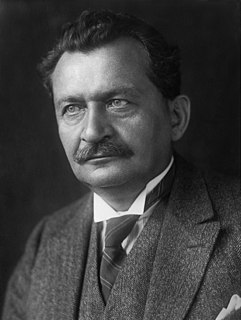
Federal elections were held in Germany on 14 September 1930. Despite losing ten seats, the Social Democratic Party of Germany (SPD) remained the largest party in the Reichstag, winning 143 of the 577 seats, while the Nazi Party (NSDAP) dramatically increased its number of seats from 12 to 107. The Communists also increased their parliamentary representation, gaining 23 seats and becoming the third-largest party in the Reichstag.
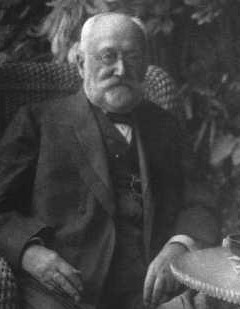
Federal elections were held in Germany on 16 June 1898. Despite the Social Democratic Party (SPD) receiving a plurality of votes, the Centre Party remained the largest party in the Reichstag after winning 102 of the 397 seats, whilst the SPD won just 56. Voter turnout was 68.1%.

Federal elections were held in Germany on 15 June 1893. Despite the Social Democratic Party (SPD) receiving a plurality of votes, the Centre Party remained the largest party in the Reichstag after winning 96 of the 397 seats, whilst the SPD won just 44. Voter turnout was 72.4%.

Federal elections were held in Germany on 12 January 1912. Although the Social Democratic Party (SPD) had received the most votes in every election since 1890, they had never won the most seats, and in the 1907 elections they had won fewer than half the seats of the Centre Party despite receiving over a million more votes. However, this election saw the party win more than double the number of votes of the second-placed Centre Party and become the largest party, winning 110 of the 397 seats.

Federal elections were held in Germany on 25 January 1907. Despite the Social Democratic Party (SPD) receiving a clear plurality of votes, they were hampered by the unequal constituency sizes that favoured rural seats. As a result, the Centre Party remained the largest party in the Reichstag after winning 105 of the 397 seats, whilst the SPD won only 43. Voter turnout was 84.7%.

Adolf Hitler's rise to power began in Germany in September 1919 when Hitler joined the political party then known as the Deutsche Arbeiterpartei – DAP. The name was changed in 1920 to the Nationalsozialistische Deutsche Arbeiterpartei – NSDAP. It was anti-Marxist and opposed to the democratic post-war government of the Weimar Republic and the Treaty of Versailles, advocating extreme nationalism and Pan-Germanism as well as virulent anti-Semitism. Hitler's "rise" can be considered to have ended in March 1933, after the Reichstag adopted the Enabling Act of 1933 in that month. President Paul von Hindenburg had already appointed Hitler as Chancellor on 30 January 1933 after a series of parliamentary elections and associated backroom intrigues. The Enabling Act—when used ruthlessly and with authority—virtually assured that Hitler could thereafter constitutionally exercise dictatorial power without legal objection.

The Reichstag, officially the Großdeutscher Reichstag after 1938, was the pseudo-Parliament of the Third Reich from 1933 to 1945. Following the Nazi seizure of power and the passing of the Enabling Act of 1933, it met only as a rubber stamp for the actions of Adolf Hitler's dictatorship — always by unanimous consent — and to listen to Hitler's speeches. In this purely ceremonial role, the Reichstag convened only 20 times, the last on 26 April 1942. The President of the Reichstag throughout this period was Hermann Göring.

Cabinet Müller I or the first Cabinet Müller was the third democratically elected government of Germany and the second in office after the Weimar Constitution came into force in August 1919. It was named after the new Chancellor (Reichskanzler) Hermann Müller of the Social Democratic Party of Germany (SPD). The cabinet was based on the same three centre-left parties as the previous one: the SPD, the German Center Party (Zentrum) and the German Democratic Party (DDP). It was formed in March 1920 after the resignation of the Cabinet Bauer. The Cabinet Müller resigned in reaction to the outcome of the Reichstag elections of 6 June 1920.

